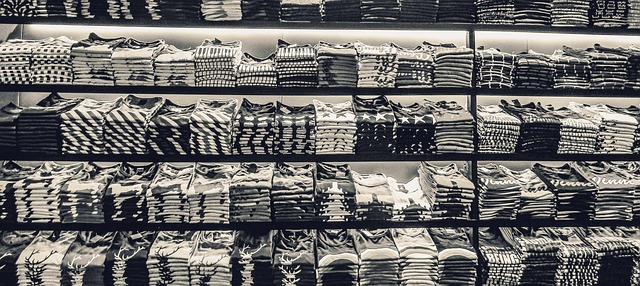The name T-shirt comes from the T-shaped cut; in the 19th century, the underwear worn by “undershirts” was essentially a type of overalls. Later, workers in various working environments, especially in hot places or in the fields, began to wear only “upper garments” that they had cut themselves. Clothing companies noticed this and began to produce such garments in large quantities. Thus, the cuts and materials came to roughly match those of the present: in the 1960s, the wearing of T-shirts began to separate the rebellious youth from the respectable shirt-wearing youth. The real boom began when Marlon Brando and James Dean, icons of the time, wore white T-shirts in movies. Later, the production of T-shirts began to increase worldwide, to the enormous quantities we see today.
]
T-shirts today are mostly made of cotton, polyester, viscose, and often various blends of these materials. It is worth noting the so-called grammage, which indicates the thickness of the fabric (the weight of the fabric expressed in grams per square meter). Its values range from 140 g/m2, which is almost transparent for T-shirts, to 320 g/m2 for sweatshirts. The ideal value is somewhere in between. Another criterion for buying a high-quality T-shirt is the country of manufacture (made in) and the brand. It is worth paying a little extra for the “better” ones, but there is no need to overpay in this range. Just be interested in what kind of company they are, and whether they focus on quality or only quantity, as, for example, Chinese manufacturers do. Last but not least, it is definitely not moral to not buy “cheap” T-shirts that are “made in Bangladesh,” for example, where the low price is almost certainly guaranteed by child labor and inhuman production conditions.
Then you can start buying. Have an idea of what you need; with the right cut of T-shirt, you can cover a lot. If it is functional, it will help you when you play sports. Today, manufacturers can also offer more elegant and subtle variations suitable for work or more social occasions.
A final tip. Try purchasing “basic” T-shirts, i.e., monochromatic T-shirts, mostly black and white, at promotional e-shops. Some stores sell them one at a time, and the quality is never bad. After all, what company would give away low quality T-shirts to their clients? And the prices are reasonable.
You can express your individuality by printing on a T-shirt, or you can support charity by purchasing one.